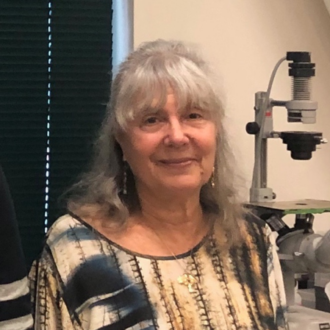Martha Stampfer
Retiree Affiliate

Building: 977, Room 104
Mail Stop: 977
Phone: (510) 486-7273
MRStampfer@lbl.gov
http://hmec.lbl.gov
Links
Research Interests
The long-term objective of my program since 1976 has been to develop and characterize an experimentally tractable human mammary epithelial cell (HMEC) culture system for use in a wide variety of studies on normal human cell biology, aging, and carcinogenesis. Our aim has been to understand normal HMEC processes, and how these processes may be altered during immortal and malignant transformation, and during aging. We believe that understanding normal healthy biology is necessary for clear understanding of what constitutes abnormal processes. Our desire to facilitate widespread use of human epithelial cells for molecular and cellular biology studies has led us to develop an HMEC system that is relatively easy to use, can provide large quantities of standardized cell populations, and is well-characterized. Ongoing collaborative studies assessing the effects of cell-cell and cell-ECM components aim to improve the ability of this in vitro culture system to accurately reflect in vivo biology.
To address our goals, we have generated an integrated HMEC culture system containing:
- Normal finite lifespan HMEC
a) The normal HMEC display long-term growth, ~30-60 population doublings
b) Cells are available from women aged 16-91, allowing study of aging effects.
c) Multiple lineages (myoepithelial, luminal, progenitor) are present, allowing study of lineage differentiation. - Aberrant finite lifespan HMEC
a) Normal HMEC were exposed to a variety of oncogenic agents/genomic changes reflective of known in vivo breast cancer etiology (e.g., chemical carcinogens, stress, p53 or p16 inactivation).
b) Exposed cultures produced aberrant cells that bypassed or overcame a stress-associated senescence barrier (stasis) via errors in the RB pathway, to become aberrant post-stasis cultures.
c) A variety of distinct post-stasis phenotypes were generated, reflecting different potential types of in vivo pathways of malignant progression. - Immortally transformed lines isogenic to normal and aberrant finite HMEC
a) Post-stasis cultures produced rare clonal lines possessing genomic errors and a variety of distinct phenotypes, including both basal and luminal.
b) Non-clonal lines without gross genomic errors have been derived by direct targeting of tumor-suppressor barriers (stasis, replicative senescence).
c) Since non-malignant immortally transformed lines have overcome the major tumor suppressor barriers, including oncogene-induced senescence (OIS), they can be readily transformed to malignancy following exposure to specific oncogenes.
d) We also have hTERT-immortalized lines, however they display very long telomeres and high telomerase activity, unlike any normal HMEC or HMEC with cancer-associated immortalization (short-regulated telomeres, modest telomerase activity); we do not think they are a good model for either normal or cancer.
Detailed information on the derivation, characterization, and methods for growth of these cells, as well as information on how other labs may obtain these cells, can be found on my website: http://hmec.lbl.gov
Our laboratory’s long-term emphasis on extensive development and characterization of one human epithelial cell type model system has enabled a unique overview and led us to produce a new model of the tumor-suppressive senescence barriers encountered by cultured normal finite lifespan HMEC as they grow, senesce, overcome senescence barriers, and gain immortality and malignancy. These ongoing studies have indicated that most (not all) normal cultured HMEC cease proliferation due to a stress-associated senescence barrier, stasis, mediated by the retinoblastoma protein (not telomere attrition). Normal HMEC prior to this barrier (pre-stasis) display significant biological differences compared to finite post-stasis HMEC or to isogenic fibroblasts.
Immortality derives from overcoming the replicative senescence barrier resulting from telomere attrition, and requires reactivation of endogenous telomerase activity – which also confers resistance to OIS. Both pre- and post-stasis finite HMEC show many significant differences compared to non-malignant immortally transformed lines, whose molecular phenotype more closely resembles cancer-derived lines than finite cultures. Significantly, our in vitro transformation model is consistent with the molecular changes observed during malignant transformation in vivo; e.g.; the molecular and genomic properties of cells in hi-grade DCIS, where immortalization is first observed, closely resemble cognate cancer, more than normal cells. Our model system makes possible examination of factors that may enhance or inhibit carcinogenesis at different stages of progression.
Recent Publications
Related News
Normal is Good: Breast Cells Produced in Novel Media Resemble Those In Vivo
When studying human cells in a laboratory, it is important that the media, or the broth that bathes the cells, contains all of the nutrients necessary to support cells through their normal growth and division phases even though they are outside of the body. Bioscientists at Berkeley Lab have a long history of studying breast cancer, and Martha Stampfer, senior scientist in the Biological Systems & Engineering (BSE) Division, has spent decades developing media now widely used by the community. Today, PLOS ONE published a study describing a comprehensive analysis of three kinds of media used to grow human mammary epithelial cells (HMEC).



